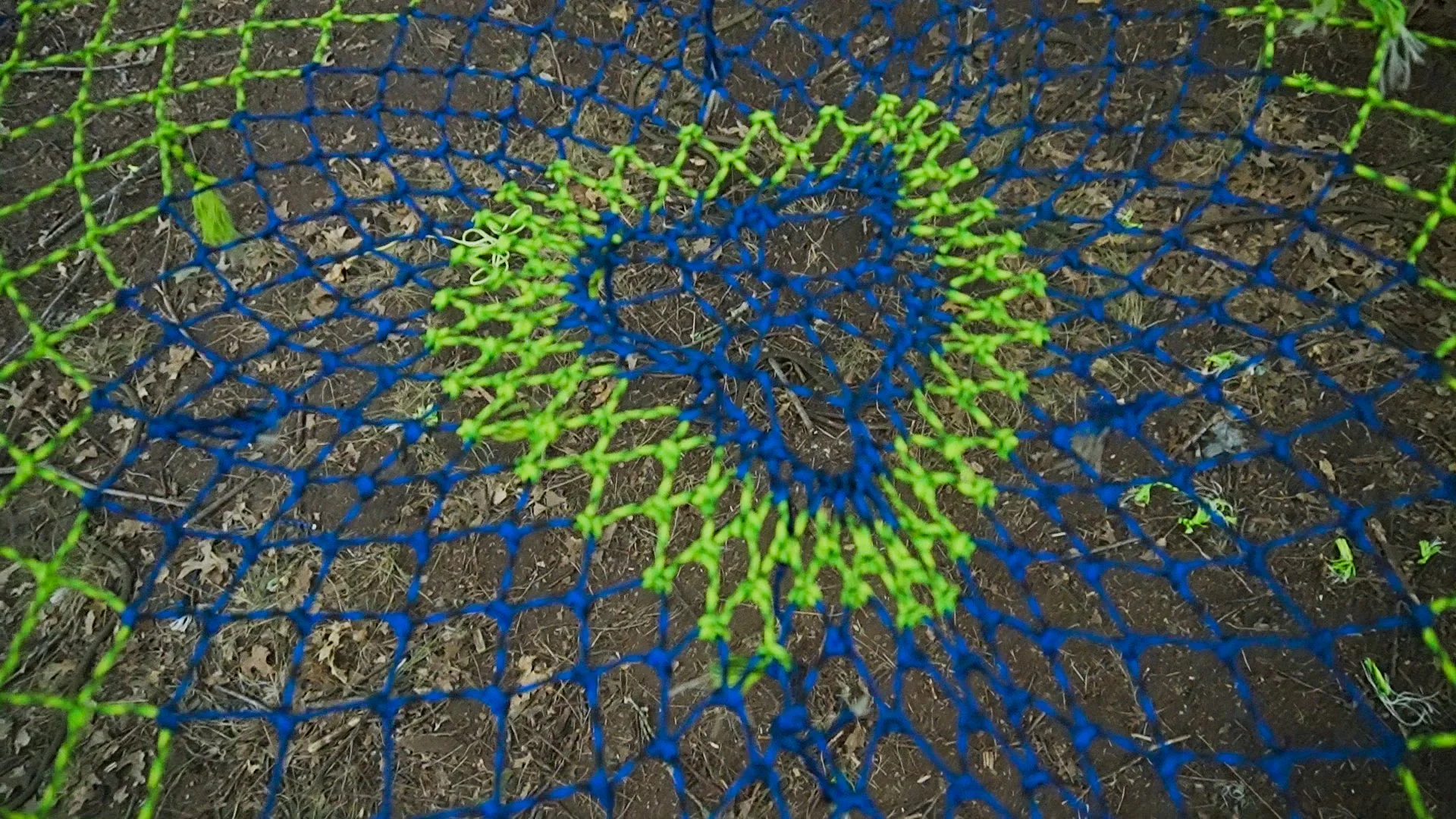
What Exactly Is a Treenet?
Treenets started with environmentalists but quickly spread — now they’re loved by climbers, artists, and architects alike. Whoever you are, there’s a spot for you on the net.
History of Treenets
Treenets began as a creative response to a big question: how can we enjoy nature without harming it?
First designed by environmental activists in the 90s, they made these Treenets to protest the cutting of redwoods and show an alternative way of living in the trees without using wood. Treenets were born from a love of trees, climbing, and community. Using climbing rope and paracord, people started weaving lightweight, tree-friendly nets high above the ground—places to gather, rest, and connect.
Since then, treenets have evolved into a movement, embraced by artists, architects, adventurers, and everyday people around the world. What started as an act of ecological respect has become a symbol of shared space, creativity, and care.
Materials Used in Treenets
At first glance, a treenet might look like some kind of wild art project — and in a way, it is. But the materials behind it are surprisingly simple and carefully chosen to balance strength, comfort, and care for the trees.
The frame of a treenet is usually made from static rope — strong and low-stretch — which creates a sturdy perimeter that holds everything together. Inside that frame, the woven web is built using paracord, a lightweight and flexible rope known for its extreme strength and variety of colors.
To protect the trees, builders wrap the anchor points with tree protection, such as padding, sleeves, or wooden blocks, preventing damage to the bark. The entire structure is held up using rope and knots alone, with no drilling, no hardware, and no permanent attachments — just smart rigging and thoughtful design.
The Process of Making a Treenet
Building a treenet is part engineering, part weaving, and part community effort. It all starts with choosing the right spot — usually three or more strong, healthy trees spaced far enough apart to form a wide, open area.
Next, builders stretch and secure a static rope perimeter between the trees, forming the frame of the net with tree protection added at the anchor points. Once the frame is stable, the weaving begins.
Using paracord, the net is filled in section by section, often in patterns like grids, diamonds, or chaos. The weaving can take days or even weeks, depending on the design and size. When it’s finished, the entire structure is tested, tweaked, and tightened.
The end result is a floating, flexible space suspended in the trees — a place to rest, connect, or simply hang out.



